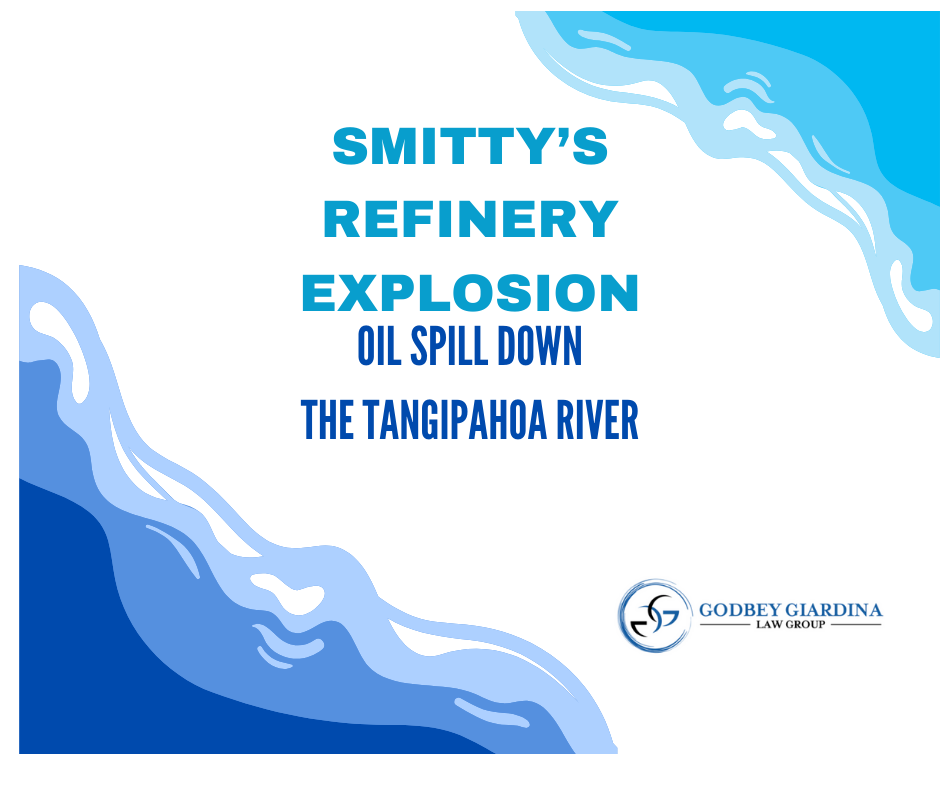Smitty’s Supply Explosion: Tangipahoa River Oil Contamination


A Crisis Beyond the Blaze
On August 22, 2025, a devastating explosion at Smitty’s Supply—a lubricant manufacturing facility near Roseland—triggered a massive fire and forced the evacuation of roughly 800 residents within a one-mile radius. What began as a local industrial disaster has now become an unfolding environmental crisis. Oil and chemical runoff have made their way into the Tangipahoa River—threatening water quality, wildlife, and homes downstream. This unfortunate development is likely going to effect thousands of Louisianians far down river to Hammond, Ponchatoula, Robert, and all the way to Lake Pontchartrain where the Tangipahoa river ends.
Oil on the Move: Tangipahoa River Contamination
Residents along the river reported seeing a visible oily sheen moving downstream, suspected to be chemical-laden residue from the plant fire. The EPA has responded, deploying nearly containment boom and conducting sampling of soil, water, and debris to halt the spread of contaminants. Cleanup crews are also laying boom systems and deploying airboats and frack trucks to recover fluids and collect oily waste.
Who Could Be Impacted? It’s Not Just Local Residents
- Downstream river communities—even those beyond the initial evacuation zone—may face contaminated water, impacting drinking water sources, fishing, and farming.
- Property, businesses and landowners near the riverbank might experience the loss of use, contamination of lawns, pastures, vehicles, or buildings.
- Fishermen and recreational users along the river could suffer from health risks or loss of access to fishing and boating areas.
- Small businesses relying on clean water—such as bait shops, campgrounds, or agricultural operations—might see economic losses as contamination spreads.
Legal Questions in These Waters
Affected individuals and communities may have grounds for several types of claims, including:
- Property Damage Claims: Contaminated land, homes, damaged vehicles, and lost livelihood—including farms and small businesses.
- Personal Injury Claims: Long-term health risks from exposure or ecosystem disruption affecting mental well-being.
- Public Nuisance or Environmental Tort Claims: Exposure of broader populations to hazardous pollutants carried by water.
- Class Actions or Representative Lawsuits: Since many residents are affected, grouping similar claims may strengthen legal position and impact.
Louisiana Claim Essentials
Statutes of limitations in Louisiana are short—typically two years for personal injury or property claims. This means residents and property owners must act quickly to preserve their rights and preserve evidence of their claim.
How Godbey Giardina Law Group Can Help
- Proactive investigations using environmental experts to trace contamination pathways and quantify harm.
- Evidence preservation: Securing water, soil, and property samples—especially for those downstream.
- Maximizing recoveries: Seeking compensation not only for clean-up and repairs but also for emotional distress and lost business/network use.
- Navigating agencies: Coordinating with EPA, state environmental authorities, and wildlife responders to support claims and relief efforts.
Take Action Now: Don’t Wait Until It’s Too Late
- Document damage thoroughly—take photos of oily residue on your property, water, vegetation, or vehicles.
- Keep track of financial losses—such as cleanup expenses, lost income, or relocation costs.
- Avoid unprotected exposure—wear gloves, avoid direct contact with oily residue, and follow health advisories.
- Contact Godbey Giardina Law Group—we offer a free, no-obligation consultation and remember you owe us nothing unless we win for you.
The Smitty’s Supply explosion is not just a local tragedy—it’s an environmental crisis with ripple effects across land, water, and lives. If you’re impacted—now or downstream—contact Godbey Giardina Law Group immediately. We’re here to help you safeguard your property, your health, and your rights.



